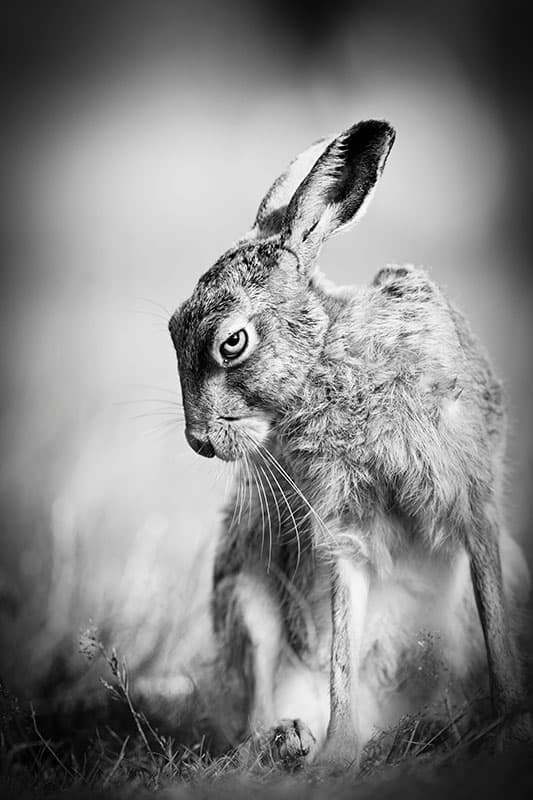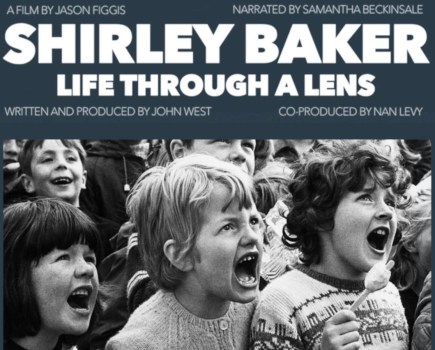Photo Insight with Peter Denness – European hare

Peter Denness has been a photographer for seven years, starting out as a very successful wildlife photographer before discovering a passion for wedding photography. His image of a European hare has won several awards, including the coveted Wildlife Photographer of the Year award 2010, which saw him take third place overall.
I have always been interested in the animal kingdom. It’s something I’ve had a great love of as far back as I can remember. I used to spend a lot of time when I was younger poring over books about animals and wildlife. However, my interest in photography is a little more recent as it’s only in the past seven years that it has really picked up. This image of a hare was taken two years after I first picked up a camera. Just before that, I’d gone on safari to Kenya and that’s when I realised it would be quite interesting to try my hand at wildlife photography.
I decided one day that I wanted to rent a 300mm f/2.8 lens and see what that kind of focal length can achieve. I’d experimented with various lenses before, but never at that extreme in terms of focal length. For example, when I was on safari, I used a 100-400mm lens. While it was a good optic, I felt the focus was perhaps a little soft. I’d heard that the 300mm f/2.8 was really sharp and I knew that I needed to find a subject that would best test the limits of the lens. I also wanted to achieve an image that I could enter into competitions. This was always in the back of my mind: will one of these shots been good enough to win awards? That’s why a good lens was important.
I’ve always had a love of hares and rabbits. I think it probably comes from watching the 1978 animated film Watership Down one too many times when I was a child. Rather than traumatising me as it seemed to do to an entire generation, it just made me all the more intrigued by these mysterious little creatures.
At the time I took this shot I lived in Croydon, Greater London, but my brother lived in Chippenham, a market town in Wiltshire. He knew a farmer who said that he’d seen some hares on his land. One very early morning I travelled to Chippenham so I could set up a hide on the farm and hopefully capture a hare. I spent a couple of days getting up at an ungodly hour – somewhere around 3am – before the sun came up. I’d sit there for hours at a time waiting for a hare to appear. Eventually, I got lucky and achieved a few shots. The best time to shoot hares is around March or April, although I didn’t actually shoot this image until a month or two after that. Regardless, I got my shot.
The hide I put in the field is called a Doghouse. It’s used a lot for shooting deer. It’s like a little fishing tent with plastic windows and flaps that can be pulled up to put the lens through. I set the hide up in the field a couple of days before I started shooting so the hares could get used to the presence of this new object in the field. Once they were used to the hide, I could start shooting. People generally assume that hares live in groups, but they are quite solitary creatures. When I set up the hide I had to make sure that it was downwind so my scent wouldn’t scare them off. I also had to ensure that as much planning went into my time there as possible. As there was probably only one hare in the field, I would have to be careful not to frighten it away.

When people talk to me about this shot, the first thing they generally say is that the eye contact is the thing that grabs their attention. The hare is looking directly at the lens creating a connection between the subject and the viewer. Ask any wildlife photographer and they’ll tell you that this is perhaps the most vital ingredient of a successful wildlife image. The sharpness is, of course, down to the 300mm lens, which was mounted on my Canon EOS-1D Mark II camera. The image came out so much sharper than I could have hoped. I think that gaze into the lens also reinforces the mythological notion of the hare being a mischievous trickster. There’s something oddly sinister about it.
A poet called David Harsent got in contact with me after seeing the image online. He had previously released a collection of poems called Marriage that in part deals with the hare’s role as a trickster in English folklore. I guess that shows I’ve managed to capture some essence of the hare’s character, as David really liked the image.
There’s a colour version of this shot that exists, but it really doesn’t have the same impact. Black & white lends the image an air of mysticism, particularly with the vignetting. The vignetting is there to really draw the viewer’s eye into the image and add to the unusual feel of the shot. Apart from the vignetting, adjustments were pretty minimal. I converted the image to black & white using Photoshop and then did some minor contrast adjustment in Lightroom. I also used Lightroom to create the vignette.
In the end, I got my wish to win awards. I won two first places and a second with this shot. Then the image started appearing in print in various places such as The Sunday Telegraph. At that point the print sales on my website shot right up. It was then that I won third place in the UK Wildlife Photographer of the Year 2010, which is a fantastic accolade for a photographer. I think people see the image as kind of unusual, which is perhaps down to the framing. I haven’t really seen another shot of a hare like this before or since. It’s an image I’m very proud of.
Peter Denness was talking to Oliver Atwell
To see more images by Peter Denness go to petedenness.com







